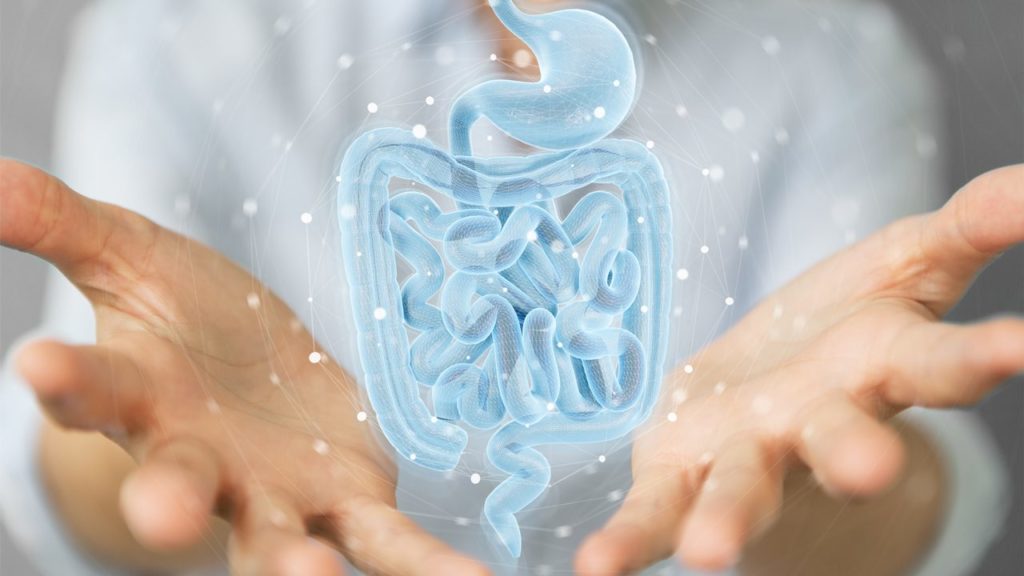
All Disease Begins in The Gut.
Hippocrates
More than 2,000 years ago, Hippocrates understood “All Disease Begins in the Gut.”
Fast forward to 2020, healthcare is moving deeper into the space of personalized medicine and understanding how the genetic expression of our gut microbiome can elevate our health.
Our GUT MICROBIOME is the key to UNLOCKING PRISTINE HEALTH.
Bacteria, viruses, fungi, and other microscopic living things are referred to as microorganisms or microbes. Trillions of these microbes exist mainly inside your intestines and on your skin. There are more bacterial cells in your body than human cells. There are roughly 40 trillion bacterial cells in your body and only 30 trillion human cells. That means you are more bacteria than a human. [1,2] In fact, there are up to 1,000 species of bacteria in the human gut microbiome weighing as much as 2–5 pounds (1–2 kg); each of them is extremely important in determining your current and future health status. [3]
Most of the microbes in your intestines are found in a area of your large intestine called the cecum, and they are referred to as the gut microbiome.
Recent studies have suggested the intestinal microbiome plays an important role in modulating the risk of several chronic diseases, including:
It is now understood that diet plays a significant role in shaping the microbiome, with experiments showing that dietary alterations can induce large, temporary microbial shifts within 24 hrs.
The ecosystem of bacteria in the human gut operates dynamically, like any other human organ. In order to ensure stability in the face of constant disturbance, microbiota species are continuously interchangeable by means of the metabolites produced by the action of gene products contained in the gut bacteria. [5]
A GI (Gastrointestinal) Map (Microbial Assay Plus) test is a test used to determine what microbes are in a person’s stool sample and in what amounts, in order to test for pathogens. A GI-Map test works by repeatedly copying any DNA in the sample and then analyzing what and how much DNA it finds.
Epigenetics is the study of heritable changes in gene function that do not involve changes in the DNA sequence. Epigenetic mechanisms include the covalent modifications of DNA and histones. [6]
Emerging evidence strongly suggests that consumption of dietary agents can alter normal epigenetic states as well as reverse abnormal gene activation or silencing. [7] Such diet-induced epigenetic changes may provide the key mechanistic link between diet-induced diseases and thus may serve as targets of intervention. [8]
Gene mapping is the sequential allocation of Loci to a relative position on a chromosome. Genetic maps are a necessary tool for mapping disease genes or trait loci. [9] Gastrointestinal Microbial Assay Plus or the GI-MAP™ test [10,11,12,13] is an innovative clinical tool that measures gastrointestinal microbiota DNA from a single stool sample with state-of-the-art, quantitative polymerase chain reaction (qPCR or real-time PCR) technology. Since the GI-MAP is a DNA-based test, results reflect the levels of pathogenic strains carrying the toxin genes, not the levels of any toxins that may be produced.
The GI-MAP test was designed to detect microbes that may be disturbing normal microbial balance or contributing to illness as well as indicators such as:
The GI-MAP tests for PATHOGENS known to cause intestinal gastroenteritis:
The GI-MAP tests many parasites including:
GI-MAP Testing may be indicated if YOU suffer from or have a FAMILY HISTORY of one of the following:
The GI-MAP Test can pinpoint the pathogenic source and provide clinically proven therapeutic protocols to ameliorate the pathologies listed above promoting a healthy intestinal barrier or Gut Microbiome for optimal health.
Cenegenics New York now offers GI-Map Testing. Our world-class physicians create a personalized plan to help you feel 10+ years younger. You’ll be more energetic, lose weight, sleep better, have more libido, and think more clearly. Click below to schedule a free consultation with one of our physicians. It’s quick + easy.
Additional Resources
How the Immune System Works to Fight Disease
Diet Trends: What You Should Know
Examples of Micronutrients That Can Help You Lose Weight!
What Are Processed Foods & Why Are They Dangerous?
Healthy Snacks to Get You Through the Day
The Role of Vitamins and Minerals as Micronutrients
References
[1] Sender R, Fuchs S, Milo R. Revised Estimates for the Number of Human and Bacteria Cells in the Body. PLoS Biol. 2016;14(8):e1002533. Published 2016 Aug 19. doi:10.1371/journal.pbio.1002533
[2] Qin J, Li R, Raes J, et al. A human gut microbial gene catalog established by metagenomic sequencing. Nature. 2010;464(7285):59–65. doi:10.1038/nature08821
[3] Integrative HMP (iHMP) Research Network Consortium. The Integrative Human Microbiome Project: dynamic analysis of microbiome-host omics profiles during periods of human health and disease. Cell Host Microbe. 2014;16(3):276–289. doi:10.1016/j.chom.2014.08.014
[4] Singh RK, Chang HW, Yan D, et al. Influence of diet on the gut microbiome and implications for human health. J Transl Med. 2017;15(1):73. Published 2017 Apr 8. doi:10.1186/s12967-017-1175-y
[5] Miro-Blanch J and Yanes O (2019) Epigenetic Regulation at the Interplay Between Gut Microbiota and Host Metabolism. Front. Genet. 10:638. doi: 10.3389/fgene.2019.00638
[6] Berdasco, M., Esteller, M. Clinical epigenetics: seizing opportunities for translation. Nat Rev Genet 20, 109–127 (2019) doi:10.1038/s41576-018-0074-2
[7] Hardy TM, Tollefsbol TO. Epigenetic diet: impact on the epigenome and cancer. Epigenomics. 2011;3(4):503–518. doi:10.2217/epi.11.71
[8] Ideraabdullah FY, Zeisel SH. Dietary Modulation of the Epigenome. Physiol Rev. 2018;98(2):667–695. doi:10.1152/physrev.00010.2017
[9] Kelly L. Williams, in Encyclopedia of Bioinformatics and Computational Biology, 2019
[10] Angol DC, Ocama P, Ayazika Kirabo T, Okeng A, Najjingo I, Bwanga F. Helicobacter pylori from Peptic Ulcer Patients in Uganda Is Highly Resistant to Clarithromycin and Fluoroquinolones: Results of the GenoType HelicoDR Test Directly Applied on Stool. BioMed research international. 2017;2017:5430723.
[11] Segata N, Haake SK, Mannon P, et al. Composition of the adult digestive tract bacterial microbiome based on seven mouth surfaces, tonsils, throat, and stool samples. Genome Biol. 2012;13(6):R42.
[12] Fraser SL. Enterococcal infections. 2017; https://emedicine.medscape.com/article/216993-overview#a5. Accessed Jul 4, 2018.
[13] Walsham NE, Sherwood RA. Fecal calprotectin in inflammatory bowel disease. Clinical and experimental gastroenterology. 2016;9:21-29. PHOTO CREDIT ***Moya A, Ferrer M. Functional redundancy-induced stability of gut microbiota subjected to disturbance. Trends Microbiol. 2016. doi:10.1016/j.tim.2016.02.002.
 Contributor: Dr. Cynthia Barrett PT, DPT, CSCS, CNS
Contributor: Dr. Cynthia Barrett PT, DPT, CSCS, CNS
Dr. Cynthia Barrett, PT, DPT, CSCS, CNS, is Founder and CEO of Wellness Couture, LLC, which provides targeted testing and evaluation as the foundation for the next level of health, nutrition and fitness based on each client’s unique microbiota and chemical makeup. Her success tailoring custom-made wellness programs for clients led her to partner with Cenegenics NYC, where she leads their Advanced Food and Nutrient Testing Program.
Dr. Barrett is a Certified Nutrition Specialist (CNS), focusing on the Gut Microbiome. Dr. Barrett has been featured in Business Insider and Women’s Day Magazines, providing expert nutrition insight. She holds a bachelor’s degree in Community Health Education from Hunter College and obtained her Doctorate in Physical Therapy (DPT) from New York University.


